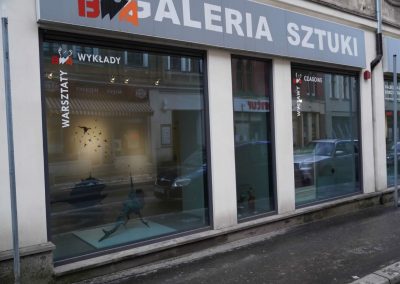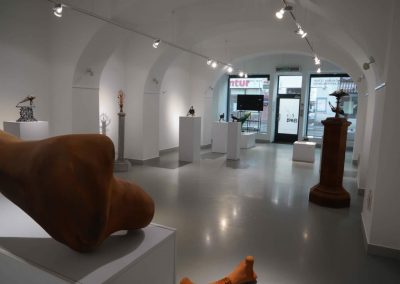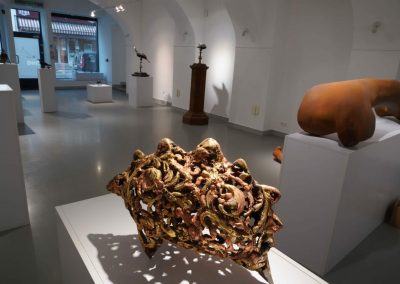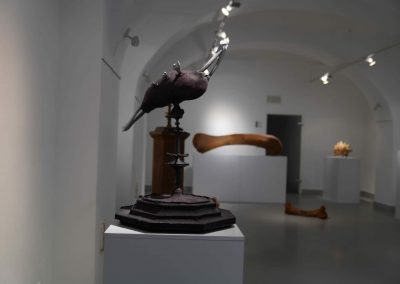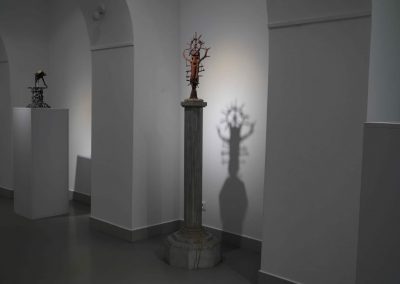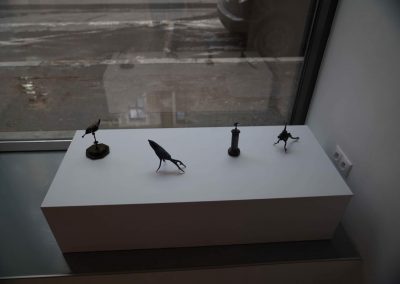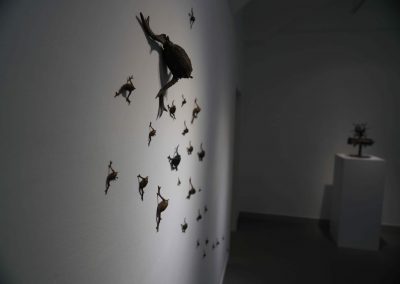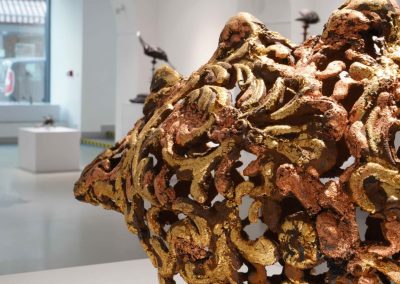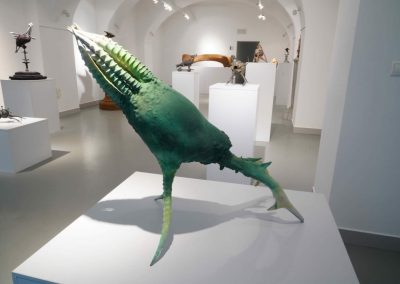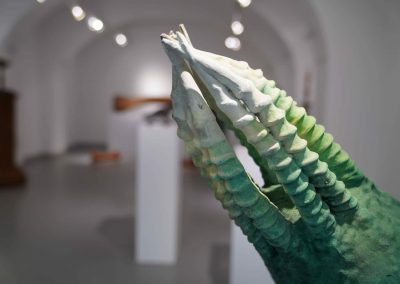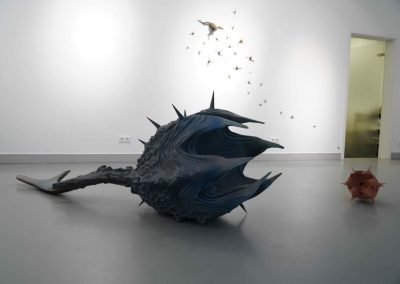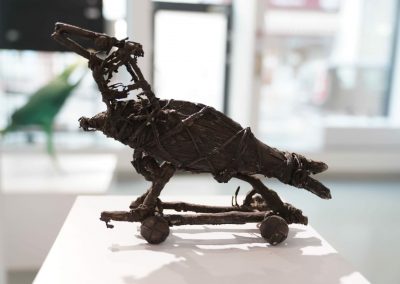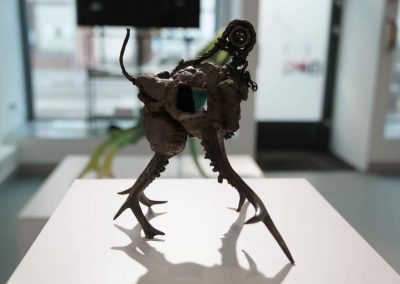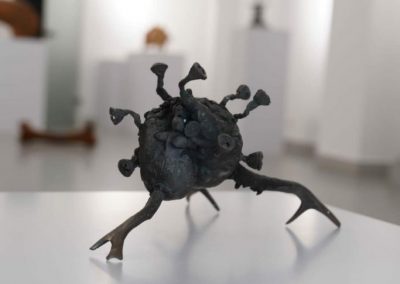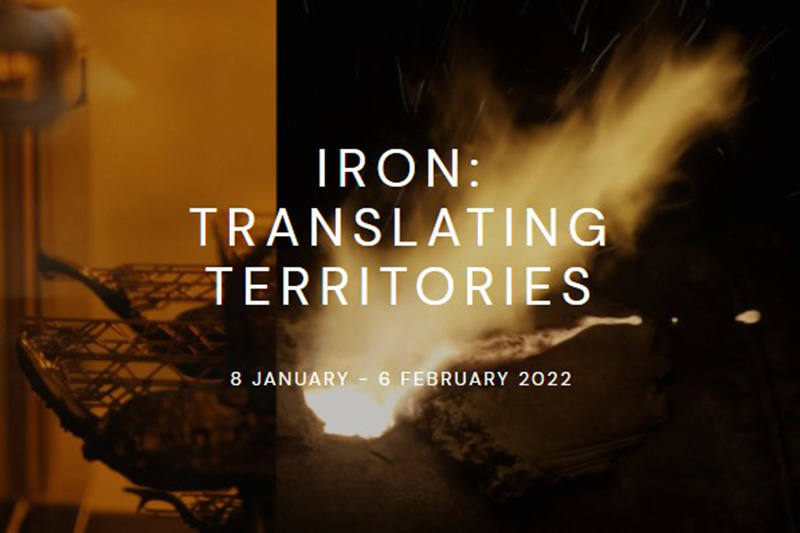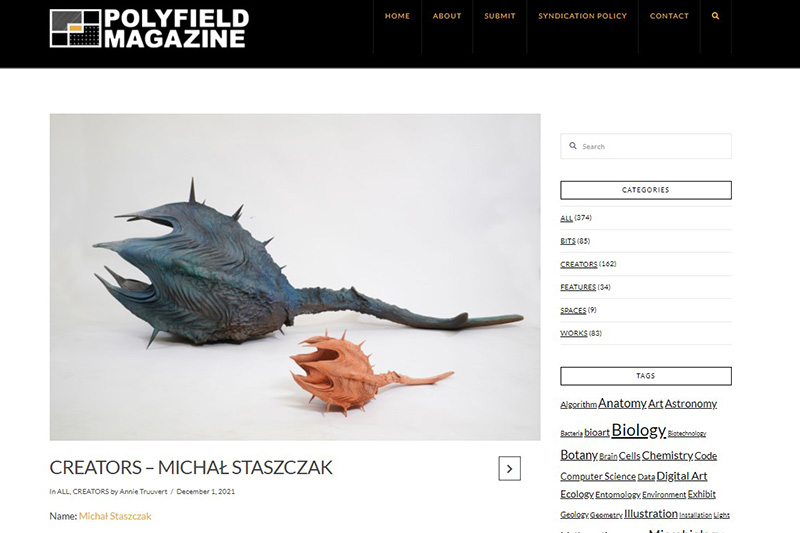>> BLOG
Usually we find a sculpture in the size that the author intended it to be. Sometimes the size depends on the artist’s preferences, sometimes on the place where the object is to function. The deliberate enlargement of everyday objects and the creation of their gigantic counterparts is not a new phenomenon among sculptors. It allows you to disrupt the habitual perception of the “tame” object, to rediscover it in front of the viewer and trigger the so-called “Wow” effect.
Over the years, I have created my sculptures individually, convinced that this way I ensure their uniqueness. My favorite sculptural material was and still is cast metal. Technological issues related to the entire process and transformation, the nature of this material and its traditional character, are very close to me. When creating models of my sculptures, I work with the assemblage method. I use various objects, shapes, textures, combine them into wax objects and cast them from metal.
Two years ago, in my sculpting activities, I started my adventure with designing and 3D printing. At first glance, the technology is radically different from the previous one. As it turns out, the method of work in which I combine the existing elements (here after scanning), multiply, and change if necessary, is the same. I only cover some of the printed sculptures with a layer of metal. However, most of them, after removing the form from the printout, are ultimately cast from metal.
However, 3D technology offers an additional, fascinating possibility – I can do the same work in different sizes. With a few clicks, I can decide whether it will be a large spatial object or a filigree, almost jewelery sculpture.
By presenting sculptures of different sizes at the exhibition, I force interaction between them. There is a relationship that makes size matter. The works function in contrast to each other, despite the fact that they are distinguished by only one feature. They evoke various emotions and associations, other details attract attention. The viewer is surprised and his perception is sharpened.
Various questions also arise. Is it the same sculpture? Which one is a copy and which is the original? Or maybe the original is the STL or OBJ file from which they were printed? Does their multiplication diminish their originality? Or maybe in the reality of the mass production that surrounds us, their uniqueness lies in the original idea of the artist who created them?
Your content goes here. Edit or remove this text inline or in the module Content settings. You can also style every aspect of this content in the module Design settings and even apply custom CSS to this text in the module Advanced settings.
Certainly, the possibility of relatively easy scaling of the object gives the sculptor an additional tool to use in the creative process, and the use of 3D technology in the process of creating sculptural objects allows for combining tradition with the latest technological achievements. However, in many cases, the decision to choose the “best and proper” size for a given object is impossible.

